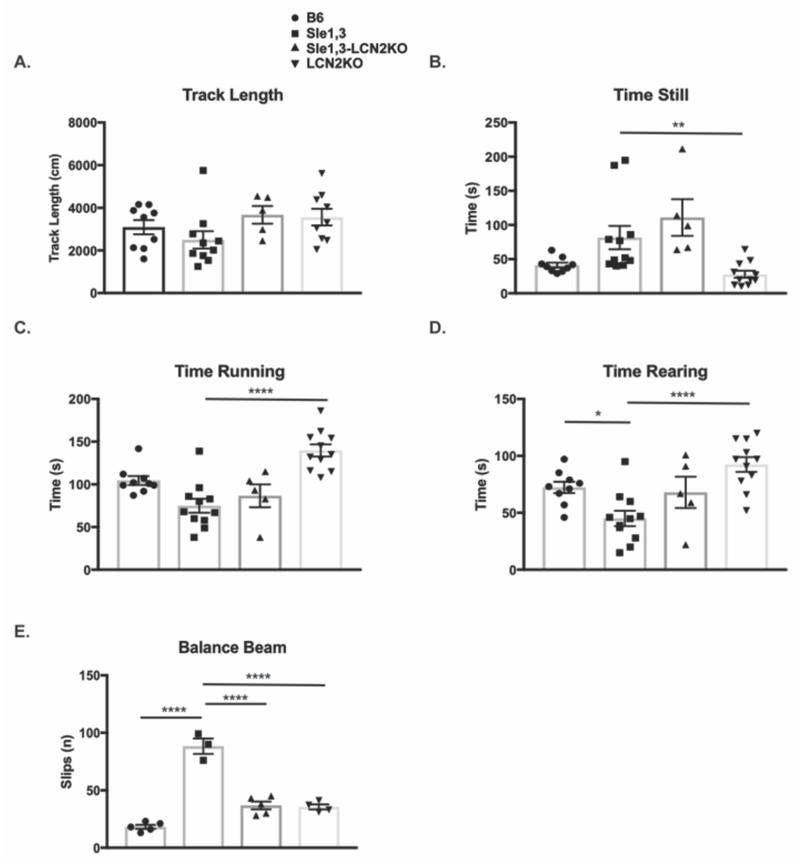Figure 1. Sle1,3 mice exhibit deficits in exploratory behavior and motor coordination that are attenuated by LCN2 deficiency.
(A-D) The duration of normal behaviors during the 9 minutes spent in the behavioral spectrometer were recorded by Viewer software. (A) Track length (B6: n=9; Sle1,3: n=10; Sle1,3-LCN2KO: n=5; and LCN2KO: n=9), (B) time spent still (B6: n=9; Sle1,3: n=11; Sle1,3-LCN2KO: n=5; and LCN2KO: n=11), and (C) time spent running (B6: n=9; Sle1,3: n=11; Sle1,3-LCN2KO: n=5; and LCN2KO: n=11) were assessed to determine if mice had normal locomotor behavior. (D) Time spent rearing, or standing on hind legs, an exploratory posture, were also assessed (B6: n=9; Sle1,3: n=11; Sle1,3-LCN2KO: n=5; and LCN2KO: n=11). (E) The number of slips while mice traversed a 1.2 cm beam was measured to assess motor coordination B6: n=5; Sle1,3: n=3; Sle1,3-LCN2KO: n=5; and LCN2KO: n=4. Mice were assessed at 7-10 months of age. Results are displayed as mean±SEM. *p<0.05, **p<0.01, and ****p<0.0001 by Kruskal-Wallis and post-hoc Dunn’s multiple comparisons test (A-C) or ANOVA and post-hoc Dunnett’s multiple comparisons test (D-E).

